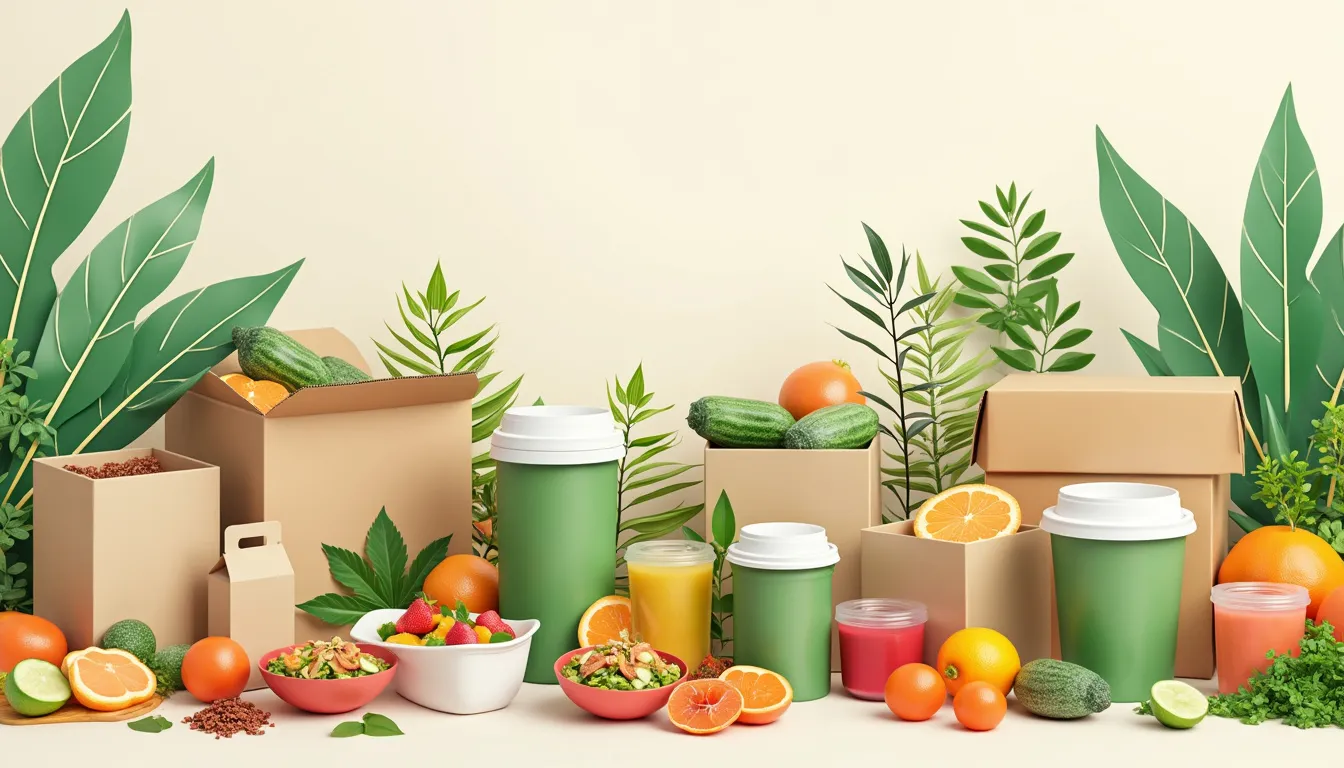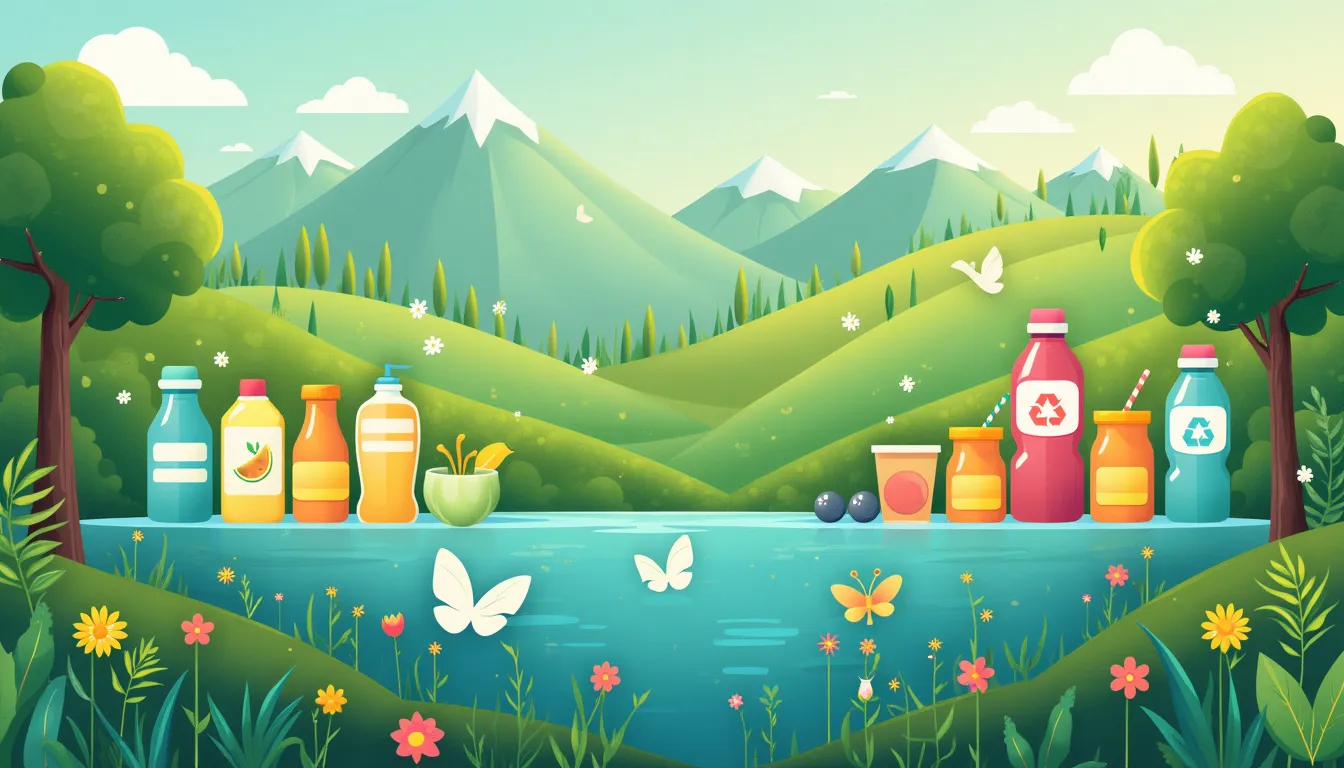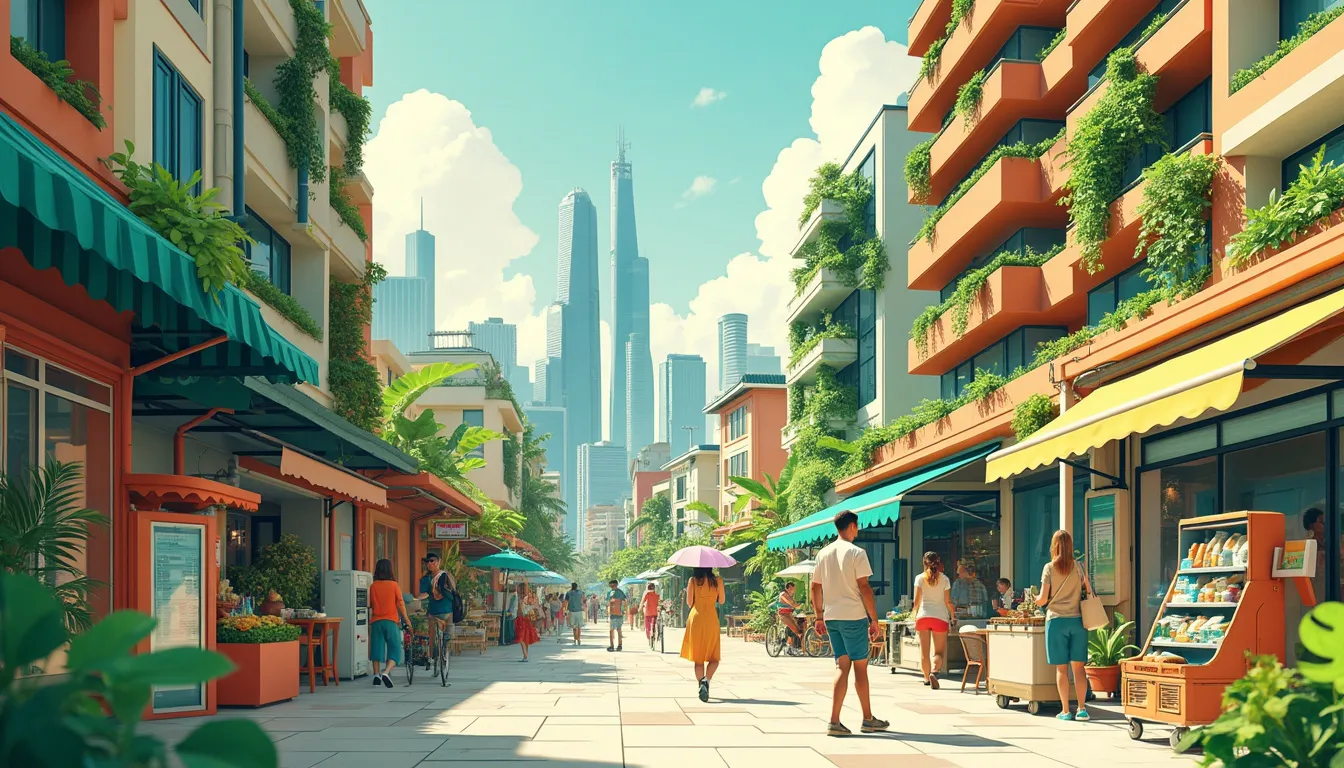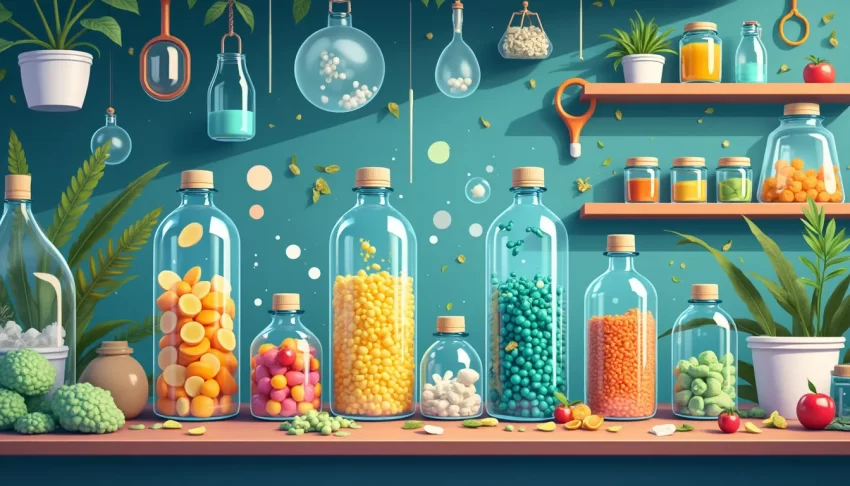In a world increasingly conscious of environmental impacts and resource management, sustainable packaging has emerged as both a necessity and a catalyst for change. As our planet faces unprecedented challenges such as climate change, pollution, and resource depletion, the way we package products is undergoing a significant transformation. Sustainable packaging is no longer a niche concern—it’s a global imperative driving industries and consumers alike to reconsider the materials and methods used in packaging.
At its core, sustainable packaging is about creating solutions that minimize environmental impact and ecological footprint. This encompasses a broad range of practices, from using biodegradable materials and plant-based plastics to adopting innovative packaging designs that reduce waste and promote reuse. The shift towards sustainable packaging is fueled by a mix of regulatory pressures, rising consumer expectations, and a growing recognition among businesses of the long-term benefits associated with eco-friendly practices.
Businesses are rapidly acknowledging that sustainable packaging isn’t just good for the planet—it’s also good for the bottom line. Companies that invest in greener packaging solutions often see reduced operational costs, enhanced brand reputation, and improved customer loyalty. Consumers today are more informed and environmentally conscious than ever before, actively seeking out products that align with their values and contribute to a more sustainable future.
As we delve into the future of sustainable packaging, we will explore the cutting-edge innovations transforming the industry, from eco-friendly materials and clever design strategies to technological advancements that make sustainable options more accessible. We’ll also highlight the manifold benefits these innovations bring, not just to the environment but also to businesses and consumers. Join us on this journey to understand how sustainable packaging is paving the way for a greener, more responsible future.
Introduction to Sustainable Packaging
In recent years, the need for sustainable packaging has surged to the forefront of global discussions on environmental preservation and waste management. But what exactly is sustainable packaging, and why is it so crucial in today’s world?
Sustainable packaging refers to the development and use of packaging solutions that have a minimal environmental impact and footprint. This involves considering the entire lifecycle of the packaging, from raw material extraction, through production and distribution, to end-of-life disposal or recycling. The goal is to design packaging that is efficient, eco-friendly, and feasible from both economic and ecological perspectives.
Why is this important now more than ever? According to the Environmental Protection Agency (EPA), packaging materials currently constitute a significant portion of municipal solid waste, with an estimated 82.2 million tons generated in the United States alone in 2018. This statistic is a clarion call for industries and consumers alike to rethink their packaging choices.
Key Factors Driving the Shift Towards Sustainable Packaging
The push towards sustainable packaging is driven by several key factors, each intertwining to create a robust momentum for change.
Environmental Awareness
Global environmental awareness has reached unprecedented levels, thanks in large part to the increasing visibility of climate change impacts and the proliferation of environmental advocacy. Consumers today are more informed and concerned about the ecological footprint of the products they purchase, pushing businesses to adopt greener practices. As a result, companies are increasingly integrating sustainable packaging into their corporate social responsibility (CSR) agendas.
Regulatory Pressures
Governments around the world are implementing more stringent regulations to curb environmental pollution caused by packaging waste. Policies ranging from plastic bans to mandatory recycling targets are influencing businesses to innovate and adopt sustainable packaging solutions. For instance, the European Union’s Circular Economy Action Plan aims to make all packaging placed on the EU market reusable or recyclable by 2030, setting a significant precedent for global regulatory standards.
Economic Incentives
Sustainable packaging is not just about complying with regulations or appeasing environmentally conscious consumers; it also offers substantial economic benefits. Companies adopting sustainable practices often discover savings in raw material costs, waste management, and energy consumption. Moreover, sustainable packaging can enhance brand reputation, drive consumer loyalty, and open up new market opportunities, as seen with brands like Patagonia and IKEA, which have built robust followings based on their sustainability commitments.
Technological Advancements
Technological innovations are vital in the pursuit of more sustainable packaging solutions. Advances in material science, such as the development of biodegradable plastics and plant-based materials, are reducing the environmental impact of traditional packaging. Additionally, technological improvements in manufacturing processes, such as digital printing and smart packaging, are enabling more efficient and environmentally-friendly production methods.
Consumer Demand
Last but certainly not least, consumer demand plays a crucial role in driving the shift towards sustainable packaging. Studies indicate a significant shift in consumer preference towards products with eco-friendly packaging. According to a survey by McKinsey, 55% of US consumers are extremely or very concerned about the environmental impact of packaging. This growing demand for sustainable options is prompting companies to innovate and prioritize eco-friendly packaging solutions to remain competitive in the market.
Corporate Responsibility and Ethics
More and more, companies are acknowledging their role in environmental stewardship. This shift is partly self-motivated by a desire to do good, but also influenced by the increasing scrutiny from stakeholders who expect businesses to act ethically. Sustainable packaging is a tangible way for companies to demonstrate their commitment to the environment and to future generations.
In summary, the shift towards sustainable packaging is driven by a perfect storm of environmental, regulatory, economic, technological, and consumer forces. By understanding these key factors, both individuals and businesses can appreciate the importance of sustainable packaging and contribute to a more sustainable future.

Innovative Approaches in Sustainable Packaging
Developments in Eco-Friendly Materials
In recent years, there has been a surge in the development of eco-friendly materials that redefine the paradigm of sustainable packaging. One such revolutionary material is biodegradable plastic. Unlike traditional plastics derived from petrochemicals, biodegradable plastics break down naturally through microbial activity. Polylactic acid (PLA), made from fermented plant starch, is an excellent example. Not only does it reduce the dependency on fossil fuels, but it also decomposes into non-toxic components, thus minimizing landfill waste.
Another trailblazer is plant-based packaging. Materials like mushroom-based packaging, invented by companies like Ecovative Design, present a biodegradable alternative to polystyrene foam. These materials are grown, not manufactured, underscoring the potential to create packaging solutions that are both sustainable and cost-effective. By utilizing agricultural byproducts and waste, plant-based packaging also promotes a zero-waste economy, transforming what would traditionally be discarded into valuable resources.
Advances in Packaging Design for Sustainability
Sustainable packaging goes beyond the material used; it also encompasses innovative design principles. Minimalistic design is a growing trend, driven by the notion that less is more. By reducing the amount of material used in packaging, companies not only cut costs but also lessen the environmental burden. For instance, Apple’s neat packaging for its products is designed to be smaller and lighter, reducing transportation emissions and material usage while still ensuring product safety.
Reusable packaging is another leap forward. Brands like Loop have popularized the concept of a circular economy where products are delivered in durable, returnable containers that customers send back for reuse. This approach redefines waste management, as packaging does not end up in landfills after a single use but is continuously cycled back into the system. It serves as a reminder that sustainability isn’t merely about using eco-friendly materials but also about rethinking the lifecycle of packaging.
Role of Technology in Enhancing Sustainable Packaging Solutions
Technology plays a pivotal role in driving the advancement of sustainable packaging solutions. Smart packaging is at the forefront of this technological revolution. Smart packaging incorporates functionalities like freshness indicators, QR codes for recycling information, and even temperature sensors, helping consumers make more informed decisions about their purchases and how to dispose of packaging responsibly. For instance, Pringles cans now feature QR codes that provide detailed recycling instructions, ensuring that components like the metal base and plastic lid are properly recycled.
Digital printing is another technological advancement revolutionizing sustainable packaging. Traditional printing methods often involve the use of harmful inks and excessive materials. Digital printing, however, reduces waste and energy consumption by using precise amounts of ink and allowing for smaller print runs. This method not only enhances the eco-friendliness of packaging but also offers businesses the flexibility to customize their packaging designs without burdening the environment.
Moreover, blockchain technology is increasingly being utilized to enhance supply chain transparency. By tracing the journey of packaging materials from origin to end-consumer, companies can ensure the ethical sourcing of materials and verify the sustainability claims of their packaging. This can build consumer trust and underline a brand’s commitment to environmental stewardship.
The synergies between innovative materials, sustainable design, and cutting-edge technology form the cornerstone of contemporary sustainable packaging solutions. These advancements not only elevate the environmental ethos of packaging but also present resilient, scalable solutions adaptable to the diverse needs of the market. As consumers become increasingly eco-conscious, the shift towards sustainable packaging is not just a fleeting trend but a fundamental transformation with profound implications for both businesses and the planet. The innovations discussed here highlight the exciting pathways we can take towards a more sustainable future, encouraging us to continually seek out and implement smarter, eco-friendly packaging solutions in our everyday lives and commercial practices.

Benefits of Sustainable Packaging
As we pivot towards more eco-conscious choices, the benefits of sustainable packaging become increasingly evident. This shift isn’t just a fleeting trend but a transformative approach with lasting positive impacts on our planet, businesses, and consumers. Let’s explore these remarkable benefits in detail.
Environmental Benefits
One of the most compelling reasons to adopt sustainable packaging is its profound environmental impact. Traditional packaging, laden with plastics and non-biodegradable materials, significantly contributes to pollution and overflowing landfills. Conversely, sustainable packaging, made from renewable resources and designed for recyclability, addresses these environmental concerns head-on.
For instance, using sustainable packaging materials like biodegradable plastics or plant-based alternatives can drastically reduce a company’s carbon footprint. According to the Environmental Protection Agency (EPA), the packaging industry is a major contributor to municipal solid waste, accounting for nearly 30% of waste annually. By switching to sustainable options, this figure can be substantially decreased, limiting the emission of greenhouse gases and helping to mitigate climate change.
Additionally, sustainable packaging often reduces energy consumption in production. For example, recycled materials typically require less energy to process than virgin materials. Paper and cardboard, commonly used in sustainable packaging, have a recyclability rate of around 68%, according to the American Forest & Paper Association. This means fewer trees are cut down, preserving vital forests that act as carbon sinks.
Economic Advantages for Businesses
Beyond the environmental perks, sustainable packaging also offers tangible economic benefits for businesses. Firstly, although the initial investment in sustainable materials could be higher, the long-term cost savings are significant. Sustainable packaging often involves reduced material usage, lighter weights, and optimized logistics, all contributing to lower operational costs.
Moreover, adopting sustainable packaging can enhance a company’s brand reputation. In today’s marketplace, consumers are increasingly value-driven, with many favoring brands that demonstrate environmental responsibility. According to a 2021 survey by IBM, nearly 80% of consumers indicated that sustainability is important to them, and over 70% would pay a premium for brands exhibiting sustainable practices.
Companies that embrace sustainable packaging can leverage this consumer preference to drive sales and foster loyalty. A compelling example is Patagonia, a company renowned for its environmental ethos. Their commitment to sustainable packaging has galvanized a loyal customer base, translating sustainable practices into a profitable and respected brand identity.
Furthermore, sustainable packaging can open up new market opportunities. As regulatory landscapes evolve, compliance with environmental regulations becomes critical. Companies that proactively adopt sustainable practices are better positioned to navigate these changes and can mitigate risks associated with potential fines or penalties. This compliance can foster trust and credibility in the eyes of consumers and stakeholders.
Consumer Benefits and Changing Preferences
The shift towards sustainable packaging isn’t solely business-driven; it aligns with changing consumer preferences and offers numerous benefits to individuals. Health-conscious choices are one such factor. Sustainable packaging typically avoids harmful chemicals commonly found in traditional plastics, such as BPA (bisphenol A) and phthalates, which can leach into food and beverages. Consumers, increasingly aware of these health risks, are naturally inclined towards safer, eco-friendly packaging alternatives.
Additionally, the force behind sustainable packaging is partly fueled by the growing demand for eco-friendly products. This demand encourages brands to adopt more sustainable practices, creating a positive feedback loop that amplifies environmental and social responsibility. An illustrative case is the popularity of reusable water bottles and bags. Consumers choosing these products actively contribute to reducing single-use plastics, exemplifying how preferences can drive significant environmental benefits.
Moreover, sustainable packaging often boasts enhanced functionality and aesthetics. Minimalistic designs not only reduce waste but also provide a cleaner, more modern look that appeals to discerning consumers. Innovations in digital printing technology have further made it possible to create visually striking packaging without compromising on sustainability, making it easier for brands to attract and retain customers.
Lastly, consumers are increasingly educated about the importance of sustainability, thanks to widespread awareness campaigns and social media influence. This awareness translates into purchasing power. As a result, brands aligning with these values are more likely to enjoy customer loyalty and word-of-mouth promotion – powerful tools in today’s digitally connected world.
In conclusion, the adoption of sustainable packaging presents profound benefits across environmental, economic, and consumer dimensions. While the path to sustainability may require thoughtful investment and change, the dividends it pays – both for the planet and for businesses – are indisputable. Companies and individuals alike stand to gain by embracing sustainable packaging, laying the groundwork for a greener, more responsible future.

Future Trends and Implications of Sustainable Packaging
The future of sustainable packaging is not only promising but crucial for fostering a healthier planet. As awareness grows and innovations continue to evolve, several key trends and implications are set to shape the landscape of packaging across various industries. Let’s explore these future trends and the impacts they bring along.
Predictions for the Growth and Adoption of Sustainable Packaging in Various Industries
The adoption of sustainable packaging is expected to rise steadily across multiple sectors, driven by consumer demand, regulatory pressure, and corporate responsibility. In particular, the food and beverage industry, which generates significant packaging waste, is poised to lead the way. A recent study indicates that this sector alone could account for nearly 50% of the sustainable packaging market by 2025[1]. As more companies recognize the financial and environmental benefits, the transition to sustainable options will become mainstream.
Industries such as cosmetics, fashion, and electronics are also making significant strides. For instance, the beauty industry, notorious for excessive use of plastic, is seeing a surge in packaging innovations like refillable containers, compostable materials, and minimalistic designs. Major brands like L’Oréal and Unilever are already setting ambitious targets to reduce their plastic footprint[2].
In the electronics sector, companies are turning to recyclable and biodegradable packaging materials. Apple’s commitment to eliminating plastic from its packaging by 2025 speaks volumes about the industry’s direction[3]. It’s evident that as these major players set benchmarks, smaller companies will follow suit, driving widespread adoption of sustainable practices.
The Impact of Regulatory Changes and Government Policies on Sustainable Packaging
Government policies and regulations are pivotal in accelerating the shift towards sustainable packaging. In the European Union, the Circular Economy Action Plan aims to ensure all packaging in the EU is reusable or recyclable in an economically viable way by 2030[4]. These stringent policies are compelling companies to rethink their packaging strategies, fostering innovation and compliance.
In the United States, states like California and Hawaii have already implemented bans on single-use plastics, pushing for alternatives that are environmentally friendly[5]. Furthermore, the U.S. government’s focus on reducing plastic waste through initiatives like the National Strategy to Reduce Plastic Waste is expected to catalyze the adoption of sustainable packaging solutions nationwide.
On the global stage, agreements such as the United Nations’ Sustainable Development Goals (SDGs) are pressuring countries to incorporate sustainability into their regulatory frameworks. As countries strive to meet these goals, we can anticipate more comprehensive legislation and policies that encourage sustainable packaging practices.
The Role of Consumer Awareness and Education in Driving Sustainable Packaging Initiatives
Consumer awareness is one of the most powerful drivers of sustainable packaging. Today’s consumers are more informed and concerned about the environmental impact of their purchases than ever before. A recent Nielsen survey found that 73% of global consumers are willing to change their consumption habits to reduce their environmental impact[6]. This shift in consumer behavior is prompting businesses to prioritize sustainability to meet the market demands.
The impact of social media and digital platforms in raising awareness cannot be overstated. Platforms like Instagram and Facebook have become hubs for eco-conscious communities where users share tips on sustainable living and expose brands that fall short of environmental expectations. As a result, companies are increasingly transparent about their packaging decisions and strive to align with consumer values.
Education also plays a crucial role. Schools and universities are incorporating sustainability into their curricula, preparing the next generation to value and advocate for eco-friendly practices. Public campaigns by environmental organizations further educate the broader population about the importance of sustainable packaging. For instance, initiatives like Plastic Free July challenge individuals to cut down on single-use plastics, influencing long-term habits and preferences.
Companies are recognizing the importance of consumer education in fostering brand loyalty and trust. By educating their audience about the benefits of sustainable packaging through clear labeling, informative websites, and engaging marketing campaigns, brands can not only enhance their reputation but also empower consumers to make conscious choices.
In summary, the future of sustainable packaging is bright, with numerous industries, regulatory bodies, and consumers driving the transformation. The implications are profound, with environmental benefits, economic advantages, and more informed consumers all converging to create a more sustainable future. By staying ahead of these trends and embracing the changes, businesses can ensure they are part of the solution, inspiring others to follow in their footsteps.
1. “Global Sustainable Packaging Market Analysis & Trends – Industry Forecast to 2025,” Research and Markets, 2021.
2. “Beauty’s big players commit to sustainability,” Cosmetics Business, 2021.
3. “Apple Doubles Down on Environmental Goals During Global Uncertainty,” Apple Newsroom, 2021.
4. “Circular Economy Action Plan,” European Commission, 2020.
5. “California Plastic Ban,” State of California, 2020.
6. “Global Consumers Seek Companies That Care About Environmental Issues,” Nielsen, 2019.
As we reflect on the numerous advancements and the undeniable benefits that sustainable packaging brings, it’s clear that we are at the cusp of a transformative era. The journey towards sustainable packaging is not just a response to the growing environmental concerns but also an exciting opportunity for innovation and progress across various sectors.
The innovative approaches we’ve explored, from the development of eco-friendly materials to the intelligent design enhancements and the adoption of cutting-edge technologies, reveal a dynamic landscape that’s increasingly focused on reducing environmental impact. These pioneering solutions not only address significant issues like plastic waste and carbon emissions but also unravel new possibilities for how products are packaged and consumed.
The benefits of sustainable packaging extend far beyond the environmental sphere. Businesses that adopt these practices often find themselves reaping economic rewards, such as cost savings from more efficient materials and manufacturing processes, as well as a boost to their brand’s image and reputation. This aligns perfectly with the shifting consumer preferences, where a growing segment of the market is demanding transparency, health-conscious choices, and a commitment to sustainability.
Looking ahead, we can anticipate that the adoption of sustainable packaging will continue to accelerate. Regulatory changes and government policies will likely play a crucial role, pushing industries to align with more stringent environmental standards. In parallel, as consumers become more educated and aware of the impact of their choices, their preferences will drive businesses to prioritize sustainability even further.
The future of sustainable packaging is not just about mitigating harm; it’s about reimagining the relationship between products, packaging, and people. It’s about harnessing innovation to create solutions that are not only kinder to our planet but also more aligned with the values of today’s conscientious consumers.
For individuals and business owners alike, this presents a powerful call to action. At home, consider small yet impactful changes like choosing products with sustainable packaging or using reusable containers. In your business, explore ways to integrate eco-friendly practices into your packaging processes, whether through material choices, design, or technological enhancements.
By embracing these changes and continually seeking new ways to innovate, we can all contribute to a more sustainable future. After all, every step towards better, more sustainable packaging is a step towards a healthier planet and a more resilient economy.
Support Us: Check out our recommended products on Amazon.

